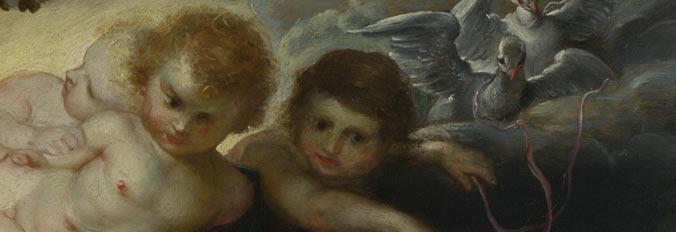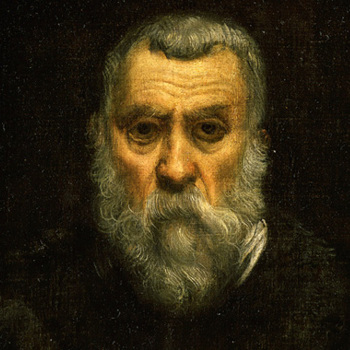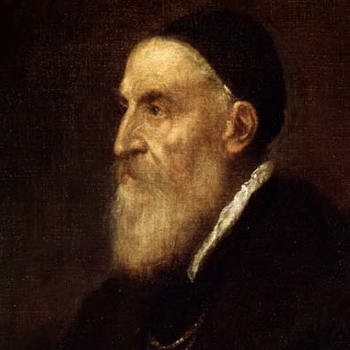Venice and Mantua
It was the goal of all young Northern European artists to go to Italy and see the great Renaissance and classical works that they knew from prints.
In 1600 the 22-year-old Rubens arrived in Venice. He had no commissions and no patron. He did, however, have contacts.
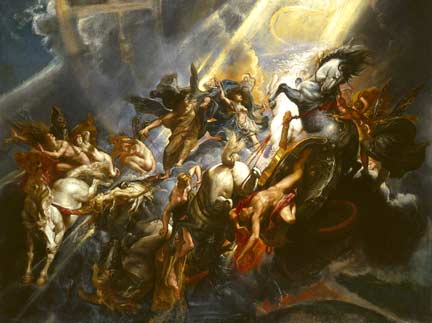
Rubens, 'The Fall of Phaetons', about 1604-6
© National Gallery of Art, Washington, DC. Image 2005 Board of Trustees.
© National Gallery of Art, Washington, DC. Image 2005 Board of Trustees.
Rubens was introduced to the Duke of Mantua who just happened to be looking for court painters and he offered the young artist a salary and a position.
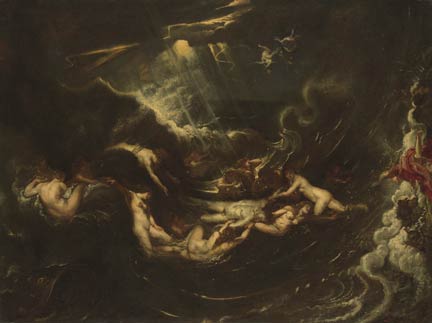
Rubens, 'Hero and Leander' about 1604-6
© Yale University Art Gallery, New Haven, Connecticut. Gift of Susan Morse Hilles.
© Yale University Art Gallery, New Haven, Connecticut. Gift of Susan Morse Hilles.
In Venice, Rubens saw works by Titian, Tintoretto and Veronese and began to incorporate elements of their styles and techniques into his own work.
'The Fall of Phaeton' and 'Hero and Leander', from around 1605, show Rubens imitating Tintoretto's dramatic lighting effects.
Next: Spain and Genoa

